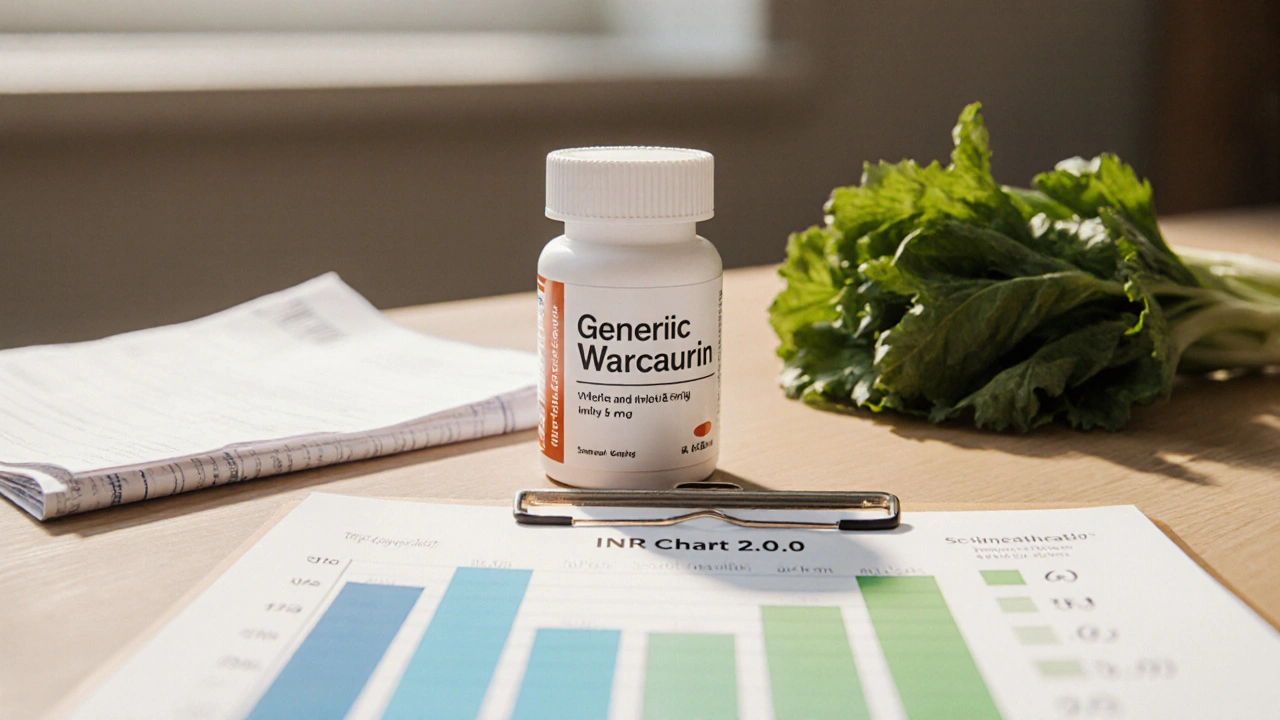Warfarin Price: What Affects the Cost and How to Save
When you’re looking at the warfarin price, the amount you pay for the blood‑thinning medication, whether it’s a brand name or a generic version. Also known as warfarin cost, this figure is shaped by a few key players. One of those players is warfarin, a vitamin K antagonist used to prevent clots. Another is the broader class of anticoagulants, drugs that thin the blood to reduce stroke and clot risk. The presence of generic warfarin, a lower‑priced version of the same active ingredient directly influences warfarin price because it offers a cheaper alternative without changing the therapeutic effect. Finally, insurance coverage, the extent to which a health plan subsidizes medication costs can either cushion or amplify what you end up paying. In practice, warfarin price encompasses dosage amount, with higher doses costing more, and it requires a prescription, which means pharmacy pricing rules apply. Insurance coverage influences the final out‑of‑pocket amount, while choosing generic warfarin can lower the bill substantially. Understanding these relationships helps you spot where savings are possible.
Different pharmacies charge different rates, and the type of pharmacy matters. Large chain stores often negotiate bulk discounts, whereas independent shops might have higher list prices but can offer price‑matching or loyalty programs. Online pharmacies, when reputable, frequently list lower warfarin price, especially for bulk orders or subscription plans. Geographic location also plays a role; some regions have higher median costs due to local market dynamics. If you have a high‑deductible health plan, your out‑of‑pocket expense could spike unless you tap into manufacturer coupons or discount cards that target anticoagulants specifically. Looking at the dosage schedule is another angle: patients on low‑dose regimens may qualify for a reduced pill count, which lowers the total price. Some clinics offer medication management services that include cost‑saving advice, like switching from brand‑name Coumadin to a generic equivalent or aligning refill dates to avoid waste. By tracking your refill history and comparing pharmacy listings, you can pinpoint the sweet spot where the medication’s effectiveness meets the most affordable price.
Key Factors Shaping Warfarin Cost
Three main variables drive the final amount you see on the receipt: the drug’s formulation (brand vs generic), the dosage prescribed, and the payer’s contribution. Brand‑name versions carry a premium because of trademarked packaging and marketing, while generics strip those extras away, leading to a lower cost per milligram. Dosage matters because warfarin’s therapeutic window is narrow; doctors often adjust the dose based on blood tests, so a higher dose translates to more tablets and a higher bill. Payer contribution includes insurance co‑pays, pharmacy benefit managers, and any supplemental assistance programs you qualify for. When you combine a generic formulation with a low dose and a robust insurance plan, the warfarin price, can drop dramatically compared to a brand‑only, high‑dose, uninsured scenario. Below you’ll find a curated collection of articles that break down each of these pieces, compare real‑world pricing examples, and give you step‑by‑step tips for reducing what you pay without compromising safety.

Cheap Generic Warfarin Online - How to Buy Safely & Save
Learn how to safely buy cheap generic warfarin online in the UK, compare prices, meet legal requirements, and manage dosing and INR monitoring.
Continue Reading



